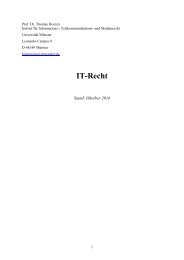3d4yVkKMl
3d4yVkKMl
3d4yVkKMl
You also want an ePaper? Increase the reach of your titles
YUMPU automatically turns print PDFs into web optimized ePapers that Google loves.
- 58 -<br />
calculations described in the JARPA II Research Plan lends support to Australia’s contention that a<br />
predetermined overall sample size has dictated the choice of the research period and the rate of<br />
change to be detected, rather than the other way around.<br />
196. Secondly, as noted above (see paragraph 149), Japan justifies the increase in the minke<br />
whale sample size in JARPA II (as compared to the JARPA sample size) by reference to the<br />
research objectives relating to ecosystem research and multi-species competition. However, the<br />
evidence suggests that the programme’s capacity to achieve these objectives has been compromised<br />
because of shortcomings in the programme’s design with respect to fin and humpback whales. As<br />
such, it is difficult to see how these objectives can provide a reasonable basis for the target sample<br />
size for minke whales in JARPA II.<br />
197. In addition, the Court recalls that Japan describes a number of characteristics that, in its<br />
view, distinguish commercial whaling from research whaling. Japan notes, in particular, that<br />
high-value species are taken in commercial whaling, whereas species of both high value and of<br />
less or no commercial value (such as sperm whales) may be taken in research whaling (see<br />
paragraph 89 above). The use of lethal methods in JARPA II focuses almost exclusively on minke<br />
whales. As to the value of that species, the Court takes note of an October 2012 statement by the<br />
Director-General of Japan’s Fisheries Agency. Addressing the Subcommittee of the House of<br />
Representatives Committee on Audit and Oversight of Administration, he stated that minke whale<br />
meat is “prized because it is said to have a very good flavour and aroma when eaten as sashimi and<br />
the like”. Referring to JARPA II, he further stated that “the scientific whaling program in the<br />
Southern Ocean was necessary to achieve a stable supply of minke whale meat”. In light of these<br />
statements, the fact that nearly all lethal sampling under JARPA II concerns minke whales means<br />
that the distinction between high-value and low-value species, advanced by Japan as a basis for<br />
differentiating commercial whaling and whaling for purposes of scientific research, provides no<br />
support for the contention that JARPA II falls into the latter category.<br />
198. Taken together, the evidence relating to the minke whale sample size, like the evidence<br />
for the fin and humpback whale sample sizes, provides scant analysis and justification for the<br />
underlying decisions that generate the overall sample size. For the Court, this raises further<br />
concerns about whether the design of JARPA II is reasonable in relation to achieving its stated<br />
objectives. These concerns must also be considered in light of the implementation of JARPA II,<br />
which the Court turns to in the next section.



